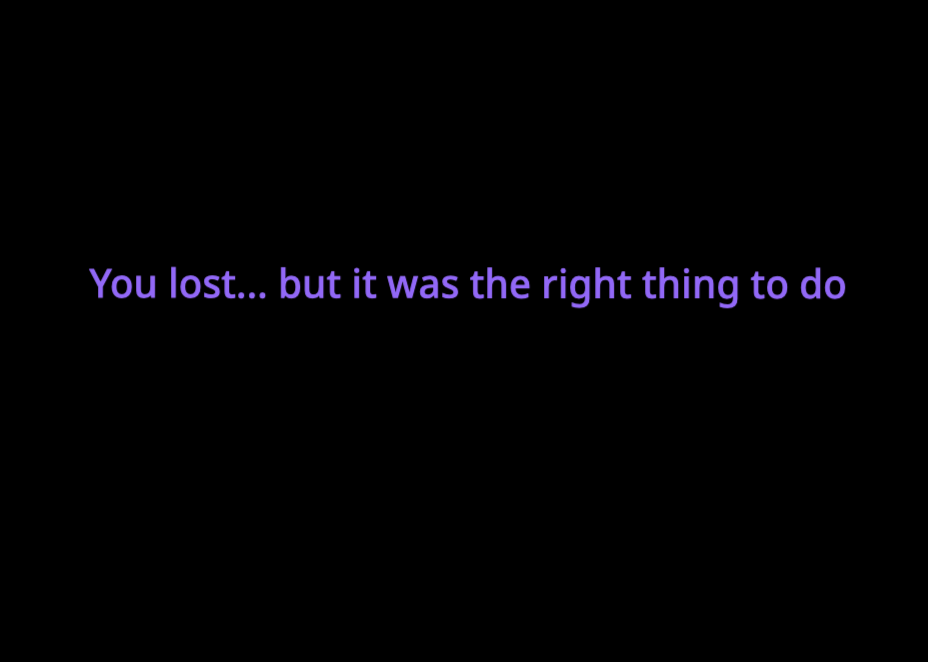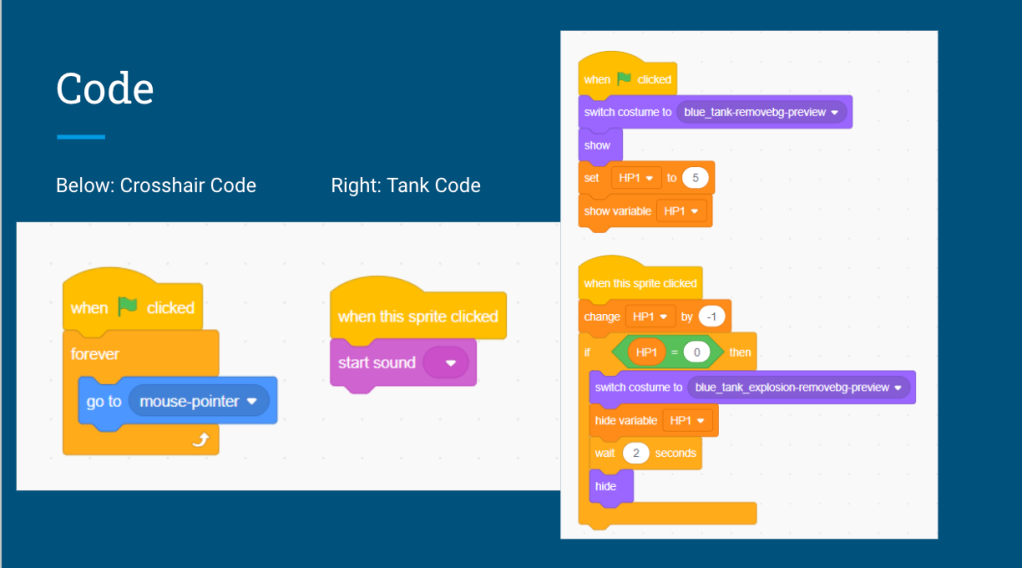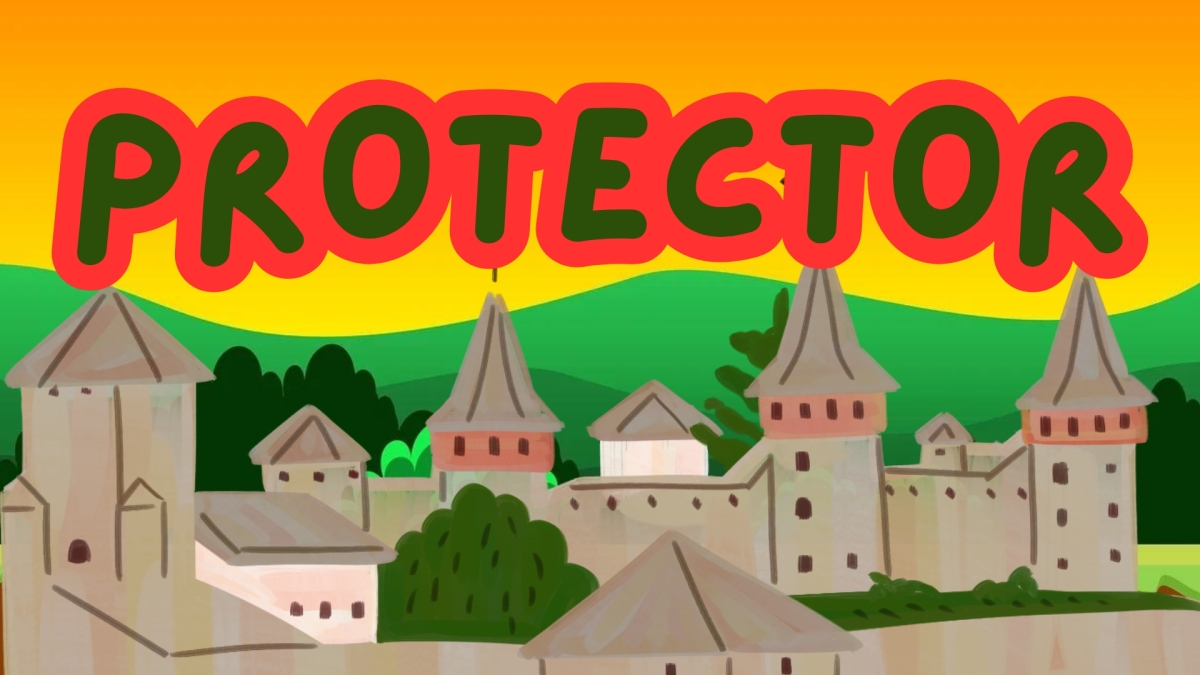With “Protector,” we set out to create a game that captures the essence of Solution and brings back the nostalgic feel of early 2010s Adobe Flash player games. The visual and gameplay style, reminiscent of those beloved games, will evoke a sense of familiarity and comfort in our gamers. Solution’s common recurring themes of collaboration and morality were our shared inspiration.
As the player, you hold the crucial role of the sniper and defender of the reeducation center. Your mission is to protect the center and its king from waves of enemy liberators determined to release its patients. The troops of armed enemies, including foot soldiers with pistols and heavily armored tanks, pose a significant threat. As you progress throughout the game, the waves of enemies become more overwhelming, putting your defense skills to the test and making you feel the weight of your responsibility.
Once overrun, you learn that the institution you have been ordered to protect is a center of repression and indoctrination, forcing innocent individuals out of their beliefs through inhumane methods.

- For those unfamiliar with the history of reeducation camps, reeducation camps are facilities where individuals are sent for political, religious, or ideological reasons to undergo forced indoctrination or “reeducation.” These camps are usually associated with authoritarian regimes and are used to control dissent, suppress opposition, and enforce conformity to the government’s beliefs or policies. The conditions within such camps vary, but most usually involve harsh treatment, forced labor, psychological manipulation, and limited freedoms.
The Design Process (Challenges/Solutions/Failures):
Because Alex and I are studying the humanities, we quickly identified that our coding skills wouldn’t be able to match the level of our STEM classmates, forcing us to look for more kid-based coding programs. Another significant drawback Alex and I encountered was the compatibility issues between Windows and Mac OS. In terms of performance, both Mac OS and Windows 11 can handle most tasks quickly, but Macs often require fewer system resources.

One of the applications we couldn’t cross-collaborate on was MS Paint. Initially released in November 1985, MS Paint is a simple raster graphics editor that allows artists to save image files in Windows, bitmap, JPEG, GIF, PNG, and single-page TIFF formats. While the characters designed could be exported, they couldn’t be made transparent through MS Paint. However, using the capabilities of Mac OS, we successfully made the characters transparent. The characters in the game have different profiles; for tanks, when you shoot them with your sniper twice, they go from this blue moving figure to a blue standstill figure with fire coming out of its cabin. As for ground-based enemies, shooting them in the body does not work, and they will keep progressing toward the center. But shooting them in the head once will result in a moving figure to a figure with blood spewing out of its head. The coding techniques for the tank and shooting physics were pretty easy to create.


Bringing Back Retro (Game Successes):
The history of protect-and-defend games is a journey that takes us back to the grainy days of arcade video gaming. It’s a story of evolution from simple concepts to intricate and immersive experiences. Games with a protect-and-defend objective usually defend a specific location, base, or character from waves of enemy threats. One of the most prominent and early examples is the classic 1978 arcade game Space Invaders. In Space Invaders, players are tasked with controlling a spaceship whose sole mission is to defend Earth from descending alien invaders. However, as the years of gaming have progressed and diversified, with titles like “Tower Defense” games becoming popular in the late 2000s, these games challenge players’ tactical skills and resource management, providing hours of engaging gameplay and a sense of accomplishment when successfully protecting what’s under their care.
However, as gaming has evolved, many newer games have veered from maintaining a nostalgic theme. Retrobowl, Sonic Mania, Mega Man, and Axiom Verge are modern games designed with retro intent. So, “Protector” resonates with gamers of almost all ages through its mechanics and aesthetics.
Our novice coding experience saved us a lot of time and made our jobs as developers a bit simpler. It allowed us to tap into the charm of older titles while mixing them with modern technology and design principles.
As we discussed in our presentation, the revival of retro-themed games is becoming essential to the gaming industry as older adults move away from games. To increase the likelihood of their company’s survival, many game companies have to start creating games that resonate with not just newer age gamers but also gamers who have stopped playing because of “no connection.”
The Learning Aspect:
After completing our game, Alex and I pondered how “Protector” offers players a thought-provoking narrative on moral complexity and the dangers of blind allegiances. We also learned that when developing games, there has to be an overarching theme that stems from the game’s storyline. In “Protector,” the theme explored how following orders blindly can compromise one’s moral stances and that challenging authority is sometimes plausible.

Here is a link to a trailer for our game: https://drive.google.com/file/d/1xqoRTlFplMCHByp7S2-QtXk9DyGur6yu/view
Blog post by Jaylan Sims and Alexander Mayo

